KYOTO, Japan (AP) — Nishijinori, the intricate weaving technique for kimonos that dates back more than a thousand years in Japan’s ancient capital of Kyoto, is getting a high-tech collaborator: artificial intelligence.
The revered colorful weaving style associated with “The Tale of Genji” of the 11th-century Heian era, has gone through its share of ups and downs. But its survival is more perilous than ever today, as demand for kimonos nose-dives among Japanese grappling with modernization.
Click to Gallery
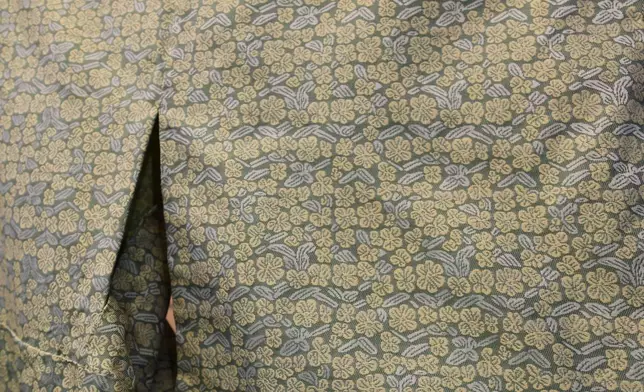
This shows the Nishijinori fabric for which AI came up with the design at the Fukuoka Weaving in Kyoto, western Japan on July 3, 2025. (AP Photo/Yuri Kageyama)
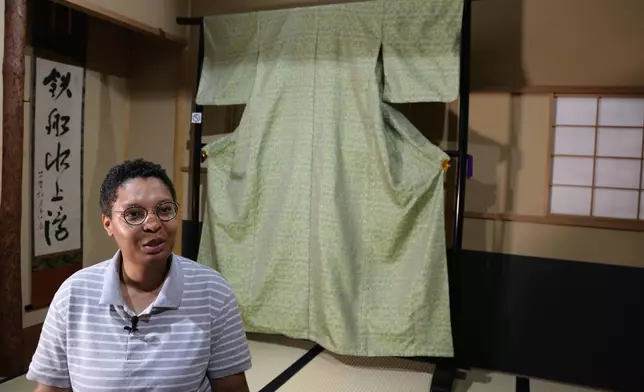
Lana Sinapayen, associated researcher at Sony Computer Science Laboratories, speaks with The Associated Press about the Nishijinori AI project with the fabric in the background in Kyoto, western Japan on July 3, 2025. (AP Photo/Yuri Kageyama)
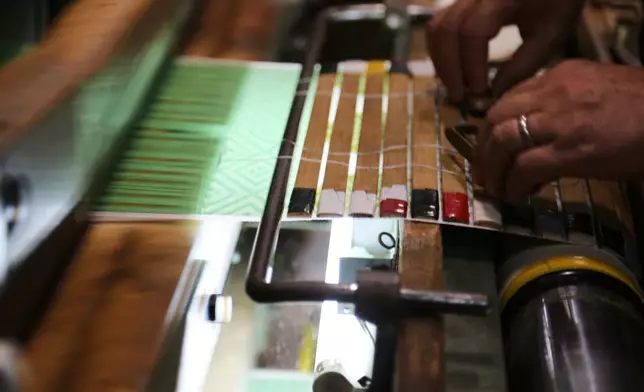
Hironori Fukuoka, the fourth-generation successor to his Nishijinori business, works on the fabric that is a collaboration with AI in Kyoto, western Japan on July 3, 2025. (AP Photo/Yuri Kageyama)
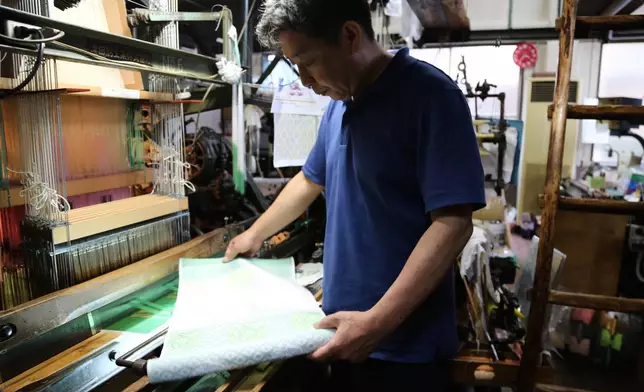
Hironori Fukuoka, the fourth-generation successor to his Nishijinori business, looks at the fabric that is a collaboration with AI in Kyoto, western Japan on July 3, 2025. (AP Photo/Yuri Kageyama)
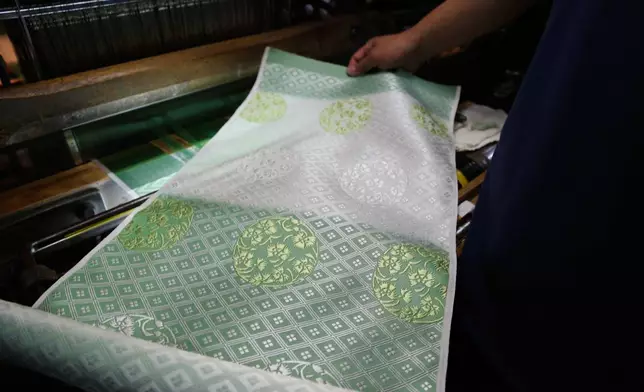
Hironori Fukuoka, the fourth-generation successor to his Nishijinori business, looks at the fabric that is a collaboration with AI in Kyoto, western Japan on July 3, 2025. (AP Photo/Yuri Kageyama)
Hironori Fukuoka, the fourth-generation successor to his Nishijinori business, is determined to keep alive the art he’s inherited, even if that means turning to AI.
“I want to leave to legacy what my father has left for me,” he said in his rickety shop in the Nishijin district of Kyoto, a city with statue-filled temples and sculpted gardens that never seems to change.
“I’ve been pondering how the art of Nishijinori can stay relevant to the needs of today,” said Fukuoka.
Besides the AI project, Fukuoka is also working on using his weaving technique to make super-durable materials for fishing rods and aircraft.
Giant looms clatter at his shop, called Fukuoka Weaving. The patterns on the gorgeous fabric, slowly turning out from the loom, are repetitive and geometric, which makes it conducive to translating into digital data. Deciding which hand-dyed color thread goes where to make the patterns is much like the on-or-off digital signals of a computer.
Such similarity is what Fukuoka focuses on in exploring how AI might work for Nishijinori, with the help of Sony Computer Science Laboratories, an independent research arm of electronics and entertainment company Sony Corp.
AI only makes suggestions for the designs and doesn’t do any of the actual production work. But that doesn’t bother Fukuoka or the researchers.
“Our research stems from the idea that human life gets truly enriched only if it has both what’s newly innovated and what never changes,” said Jun Rekimoto, chief science officer at Sony CSL, which is also studying how AI can be used to document and relay the moves of a traditional Japanese tea ceremony.
“We don’t believe AI can do everything. Nishijinori is a massive, complicated industry and so it starts with figuring out where AI can help out,” said Rekimoto, also a professor at the University of Tokyo.
What has come of it is a startling but logical turn in thinking, fitting of the art adorning kimonos worn by Japan’s imperial family.
The AI was fed various Nishijinori patterns that already existed and instructed to come up with its own suggestions. One was a bold pattern of black and orange that seemed to evoke a tropical motif.
To Fukuoka, some of AI’s ideas are interesting but simply off. The difference between AI and the human effort is that the former can come up with multiple suggestions in a matter of seconds.
Fukuoka immediately gravitates toward the one that uses a motif of a leaf to define the angular lines of a traditional pattern, something he says a human wouldn’t have thought of. He finds that ingenious.
The kimono the AI collaboration has produced is a luscious soft green, although it doesn’t have a price tag and isn’t in production yet.
The weaving is carried out by the old-style machine under the guidance of the human artist in the traditional way.
Nishijinori kimonos sell for as much as a million yen ($6,700). Many Japanese these days don’t bother buying a kimono and may rent it for special occasions like weddings, if at all.
Putting one on is an arduous, complicated affair, often requiring professional help, making kimonos even less accessible.
Dr. Lana Sinapayen, associate researcher at Sony CSL, believes AI often gets assigned the creative, fun work, leaving tedious tasks to people, when it should be the other way around.
“That was my goal,” she said in an interview at Fukuoka Weaving, of her intent to use AI in assistant roles, not leadership positions.
Digital technology can’t automatically represent all the color gradations of Nishijinori. But AI can figure out how to best do that digitally, and it can also learn how the human artist fixes the patterns it has produced.
Once that’s all done, AI can tackle arduous tasks in a matter of seconds, doing a pretty good job, according to the researchers.
Artificial intelligence is being used widely in factories, offices, schools and homes, because it can do tasks faster and in greater volume, and is usually quite accurate and unbiased, compared to human efforts. Its spread has been faster in the U.S. and other Western nations than in Japan, which tends to be cautious about change and prefers carefully made, consensus-based decisions.
But the use of AI in arts and crafts is promising, such as text-to-image generative AI for the creation of visual images from text prompts, according to a study by Henriikka Vartiainen and Matti Tedre, who looked at the use of AI by craft educators in Finland.
“As computers have taken over many routine-like and boring tasks that were previously performed by people, the computer revolution has also been said to liberate time and offer new opportunities for human imagination and creativity,” they said.
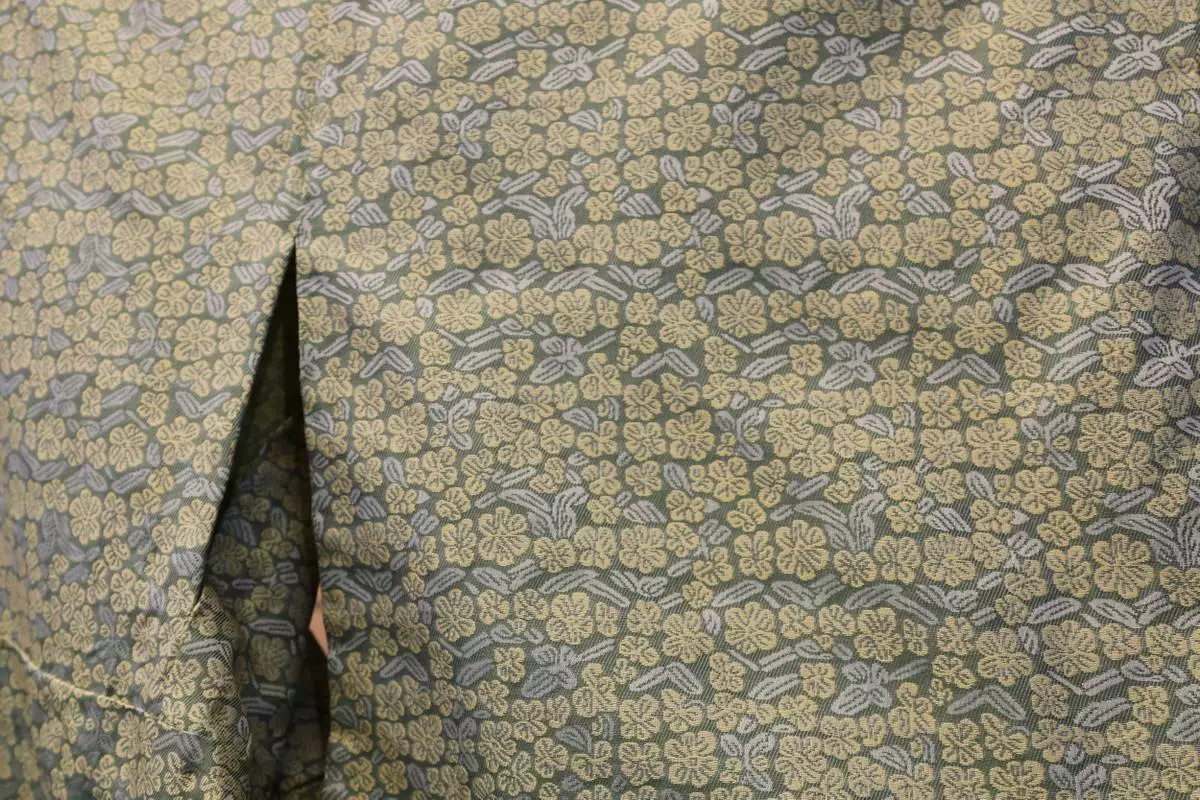
This shows the Nishijinori fabric for which AI came up with the design at the Fukuoka Weaving in Kyoto, western Japan on July 3, 2025. (AP Photo/Yuri Kageyama)
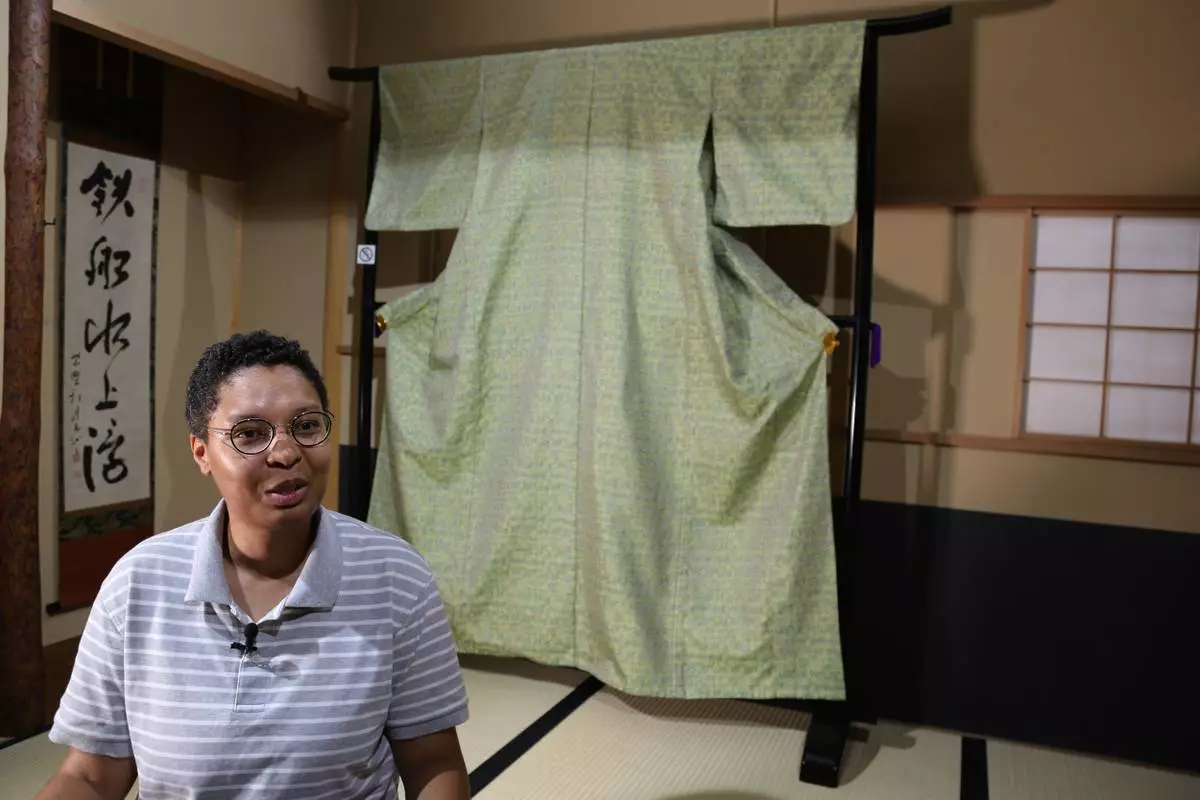
Lana Sinapayen, associated researcher at Sony Computer Science Laboratories, speaks with The Associated Press about the Nishijinori AI project with the fabric in the background in Kyoto, western Japan on July 3, 2025. (AP Photo/Yuri Kageyama)

Hironori Fukuoka, the fourth-generation successor to his Nishijinori business, works on the fabric that is a collaboration with AI in Kyoto, western Japan on July 3, 2025. (AP Photo/Yuri Kageyama)
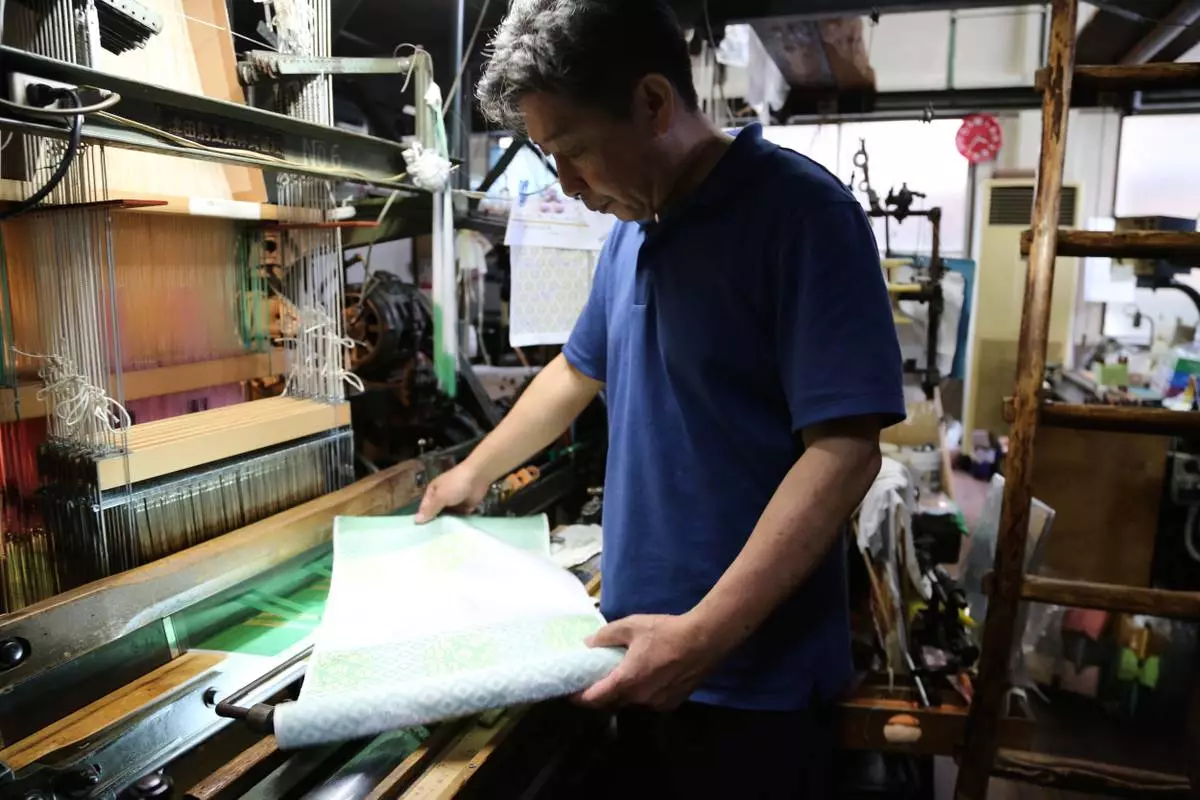
Hironori Fukuoka, the fourth-generation successor to his Nishijinori business, looks at the fabric that is a collaboration with AI in Kyoto, western Japan on July 3, 2025. (AP Photo/Yuri Kageyama)
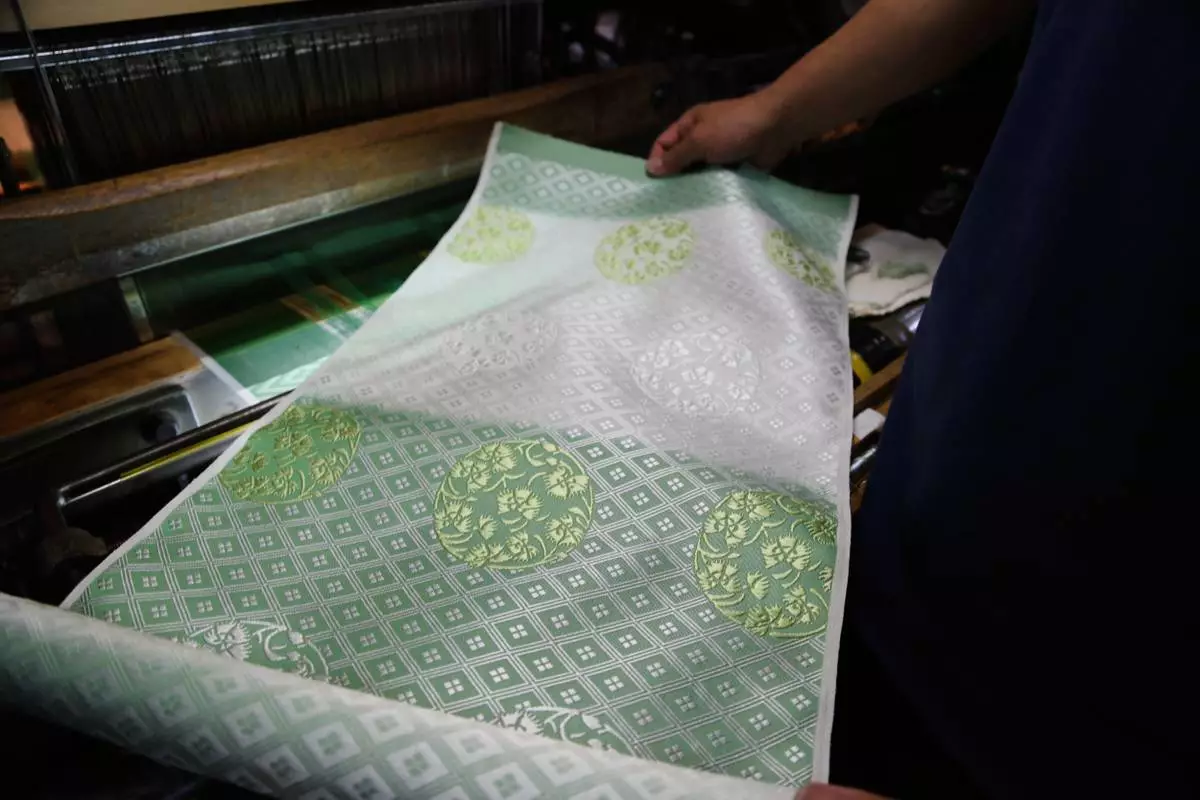
Hironori Fukuoka, the fourth-generation successor to his Nishijinori business, looks at the fabric that is a collaboration with AI in Kyoto, western Japan on July 3, 2025. (AP Photo/Yuri Kageyama)
MANILA, Philippines (AP) — A tropical storm was blowing across the Philippines’ mountainous north Friday, worsening more than a week of bad weather that has caused at least 25 deaths and prompted evacuations in villages hit by flooding and landslides.
The storm was Typhoon Co-may when it blew Thursday night into the town of Agno in Pangasinan province with maximum sustained winds of 120 kilometers (74 miles) per hour and gusts of up to 165 kph (102 mph). It was weakening as it advanced northeastward and had sustained winds of 85 kph (53 mph) Friday afternoon.
Co-may was intensifying seasonal monsoon rains that had swamped a large swath of the country for more than a week.
Disaster-response officials have received reports of at least 25 deaths since last weekend, mostly due to flash floods, toppled trees, landslides and electrocution. Eight other people were reported missing, they said.
There were no immediate reports of deaths or injuries directly caused by Co-may, locally called Emong, the fifth weather disturbance to hit the Philippines since the rainy season started in last month. More than a dozen more tropical storms were expected to batter the Southeast Asian country the rest of the year, forecasters said.
The government shut down schools in metropolitan Manila for the third day Friday and suspended classes in 35 provinces in the main northern region of Luzon. More than 80 towns and cities, mostly in Luzon, have declared a state of calamity, a designation that speeds emergency funds and freezes the prices of commodities, including rice.
The days of stormy weather have forced 278,000 people to leave their homes for safety in emergency shelters or relatives’ homes. Nearly 3,000 houses have been damaged, the government’s disaster response agency said.
Travel by sea and air has been restricted in northern provinces being pounded or in the typhoon’s path.
Thousands of army forces, police, coast guard personnel. firefighters and civilian volunteers have been deployed to help rescue people in villages swamped in floodwaters or isolated due to roads blocked by landslides, fallen trees and boulders.
The United States said it will provide $250,000 in funding to the U.N. World Food Programme to help the Philippine government’s response. “We are tracking the devastation caused by the storms and floods and are deeply concerned for all those affected,” U.S. Ambassador MaryKay Carlson said.
After returning from his White House meeting with U.S. President Donald Trump, President Ferdinand Marcos Jr. visited emergency shelters Thursday in Rizal province to help distribute food packs to displaced residents. He later convened an emergency meeting with disaster-response officials, where he underscored the need for the government and the people to adapt to and brace for climate change and the larger number of and more unpredictable natural calamities it’s setting off.
“Everything has changed,” Marcos said. “Let’s not say, `The storm may come, what will happen?’ because the storm will really come.”
The United States, Manila’s longtime treaty ally, has pledged to provide military aircraft to airlift food and other aid to remote island provinces and the countryside if the calamity worsens, the Philippines military said.
The Philippines, which lies between the Pacific Ocean and the South China Seas, is battered by about 20 typhoons and storms each year. It’s often hit by earthquakes and has about two dozen active volcanoes, making it one of the world’s most disaster-prone countries.
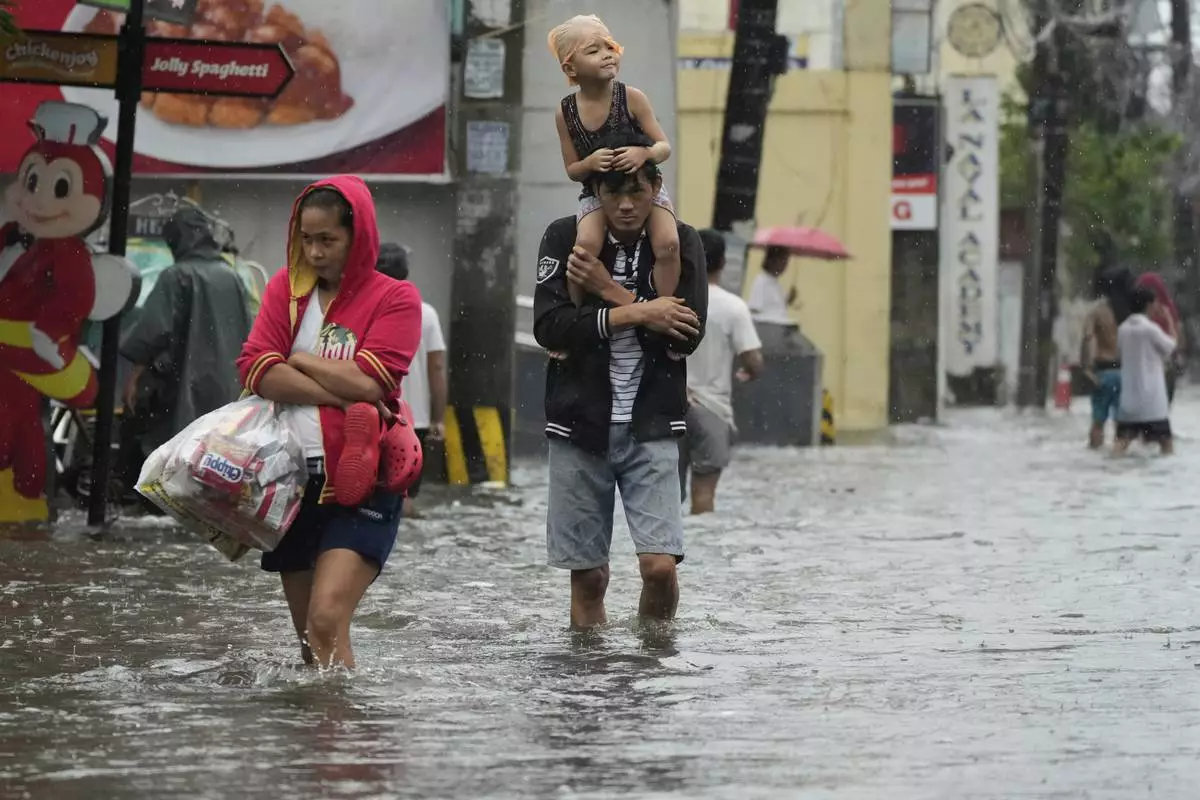
Residents wade along a flooded road as intense rains continue due to the southwest monsoon at Malabon city, Philippines on Thursday, July 24, 2025. (AP Photo/Aaron Favila)
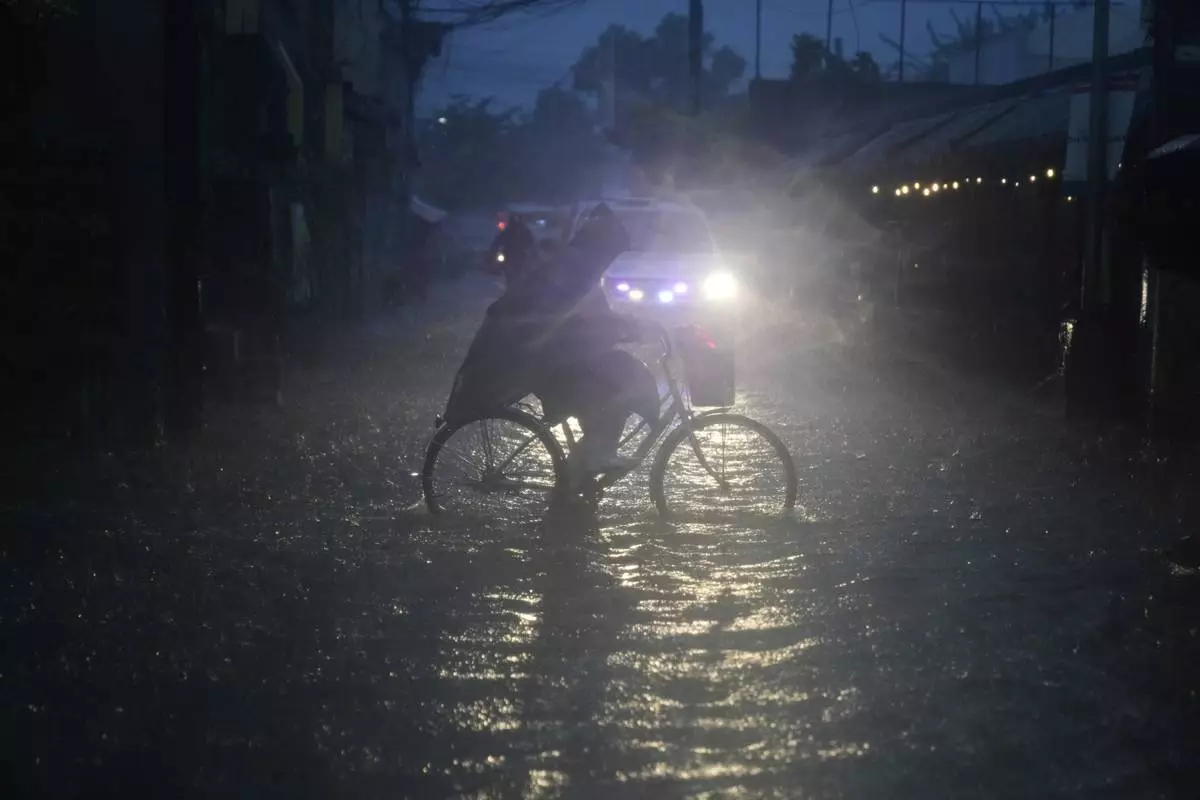
A man pedals his bicycle along a flooded road as intense rains continue due to the southwest monsoon at Malabon city, Philippines on Thursday, July 24, 2025. (AP Photo/Aaron Favila)
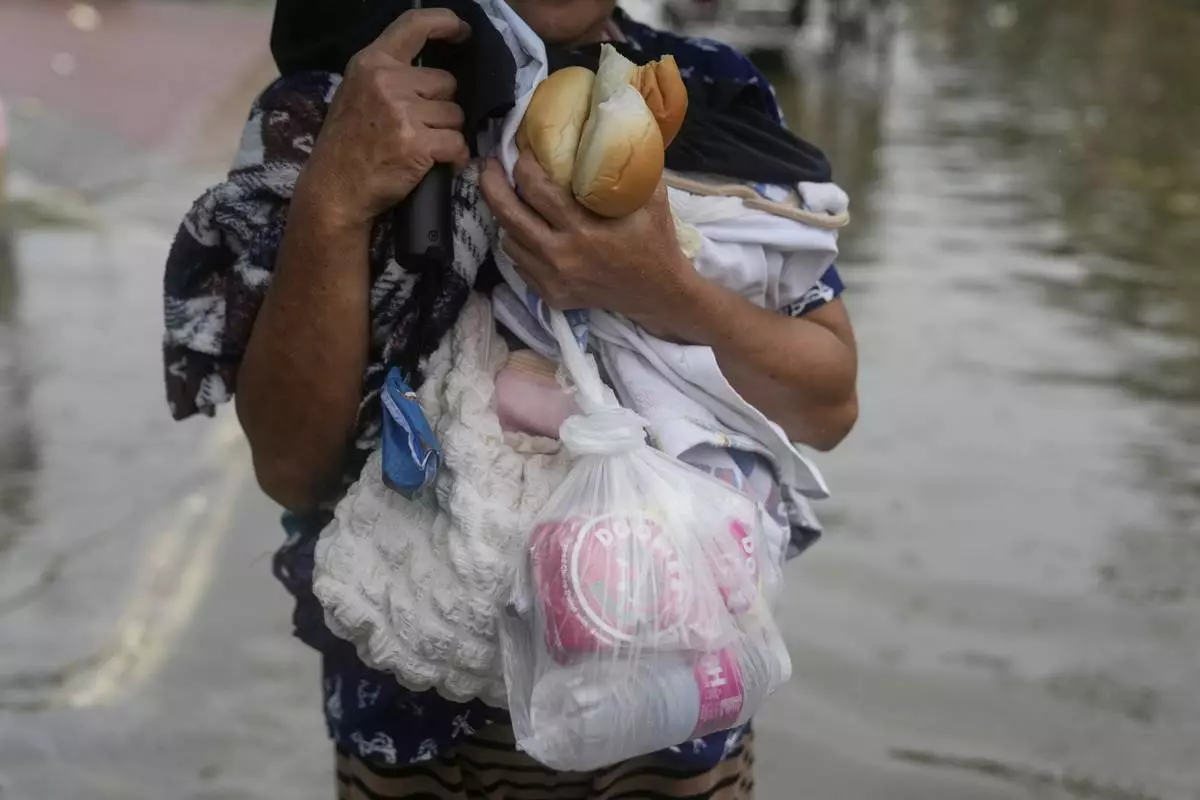
A resident carries items from her flooded home as intense rains continue due to the southwest monsoon at Malabon city, Philippines on Thursday, July 24, 2025. (AP Photo/Aaron Favila)
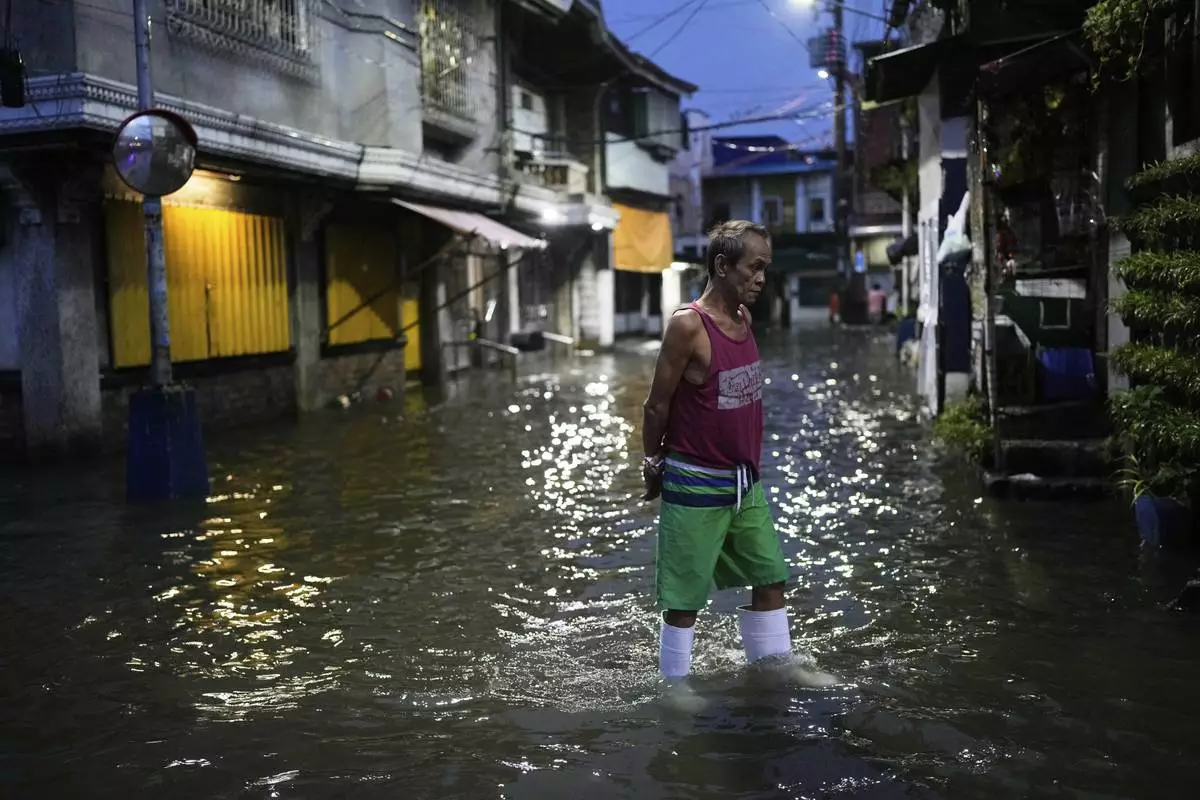
A man walks along a flooded road as intense rains continue due to the southwest monsoon at Malabon city, Philippines on Thursday, July 24, 2025. (AP Photo/Aaron Favila)
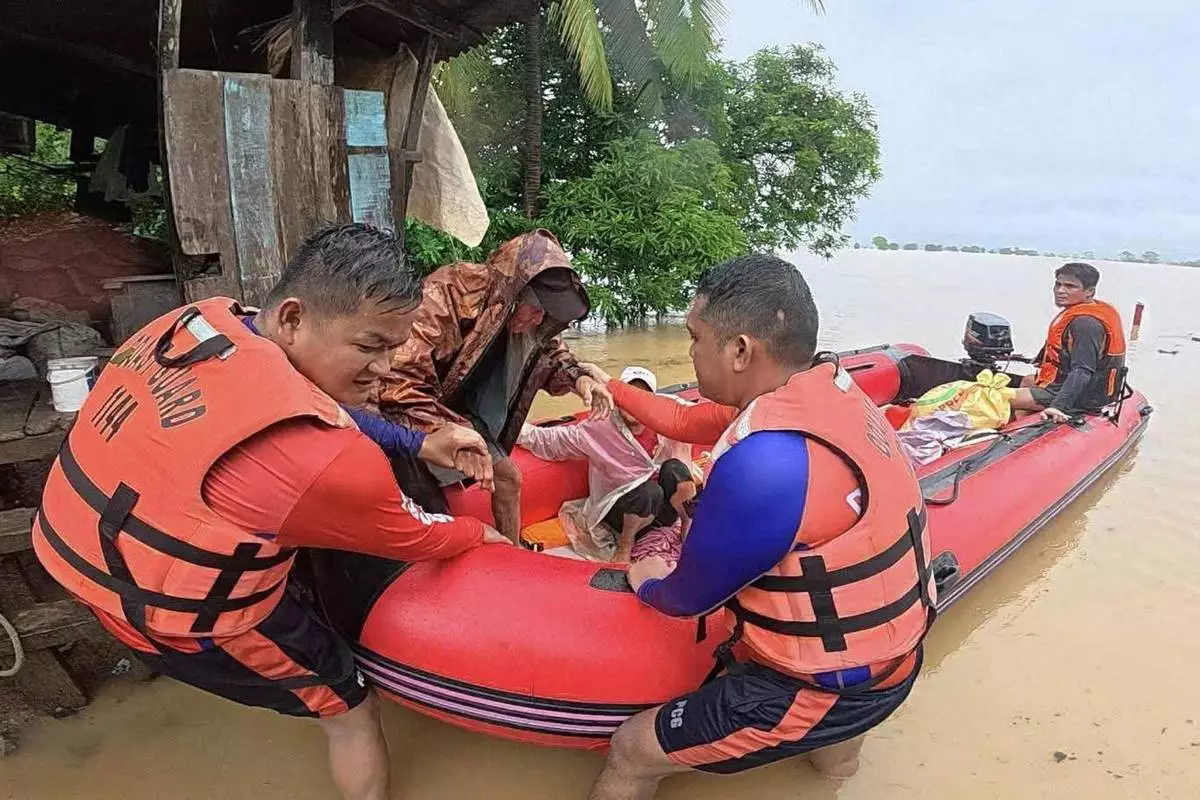
In this photo provided by the Philippine Coast Guard, rescuers assist a man to a rubber boat as they bring him to safer grounds following floods in Mamburao, Occidental Mindoro province, Philippines on Wednesday July 23, 2025. (Philippine Coast Guard via AP)3
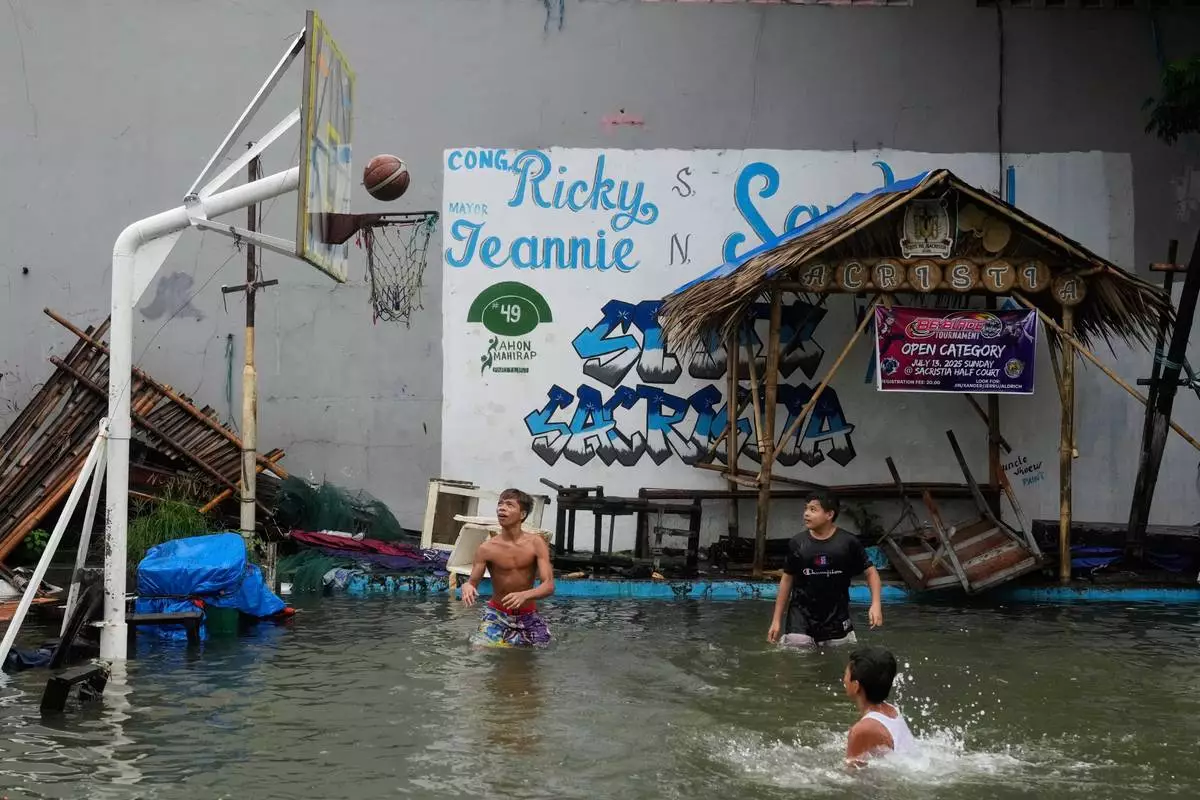
Boys play basketball at a flooded court as Typhoon Co-may intensified seasonal monsoon rains at Malabon city, Philippines on Friday, July 25, 2025. (AP Photo/Aaron Favila)
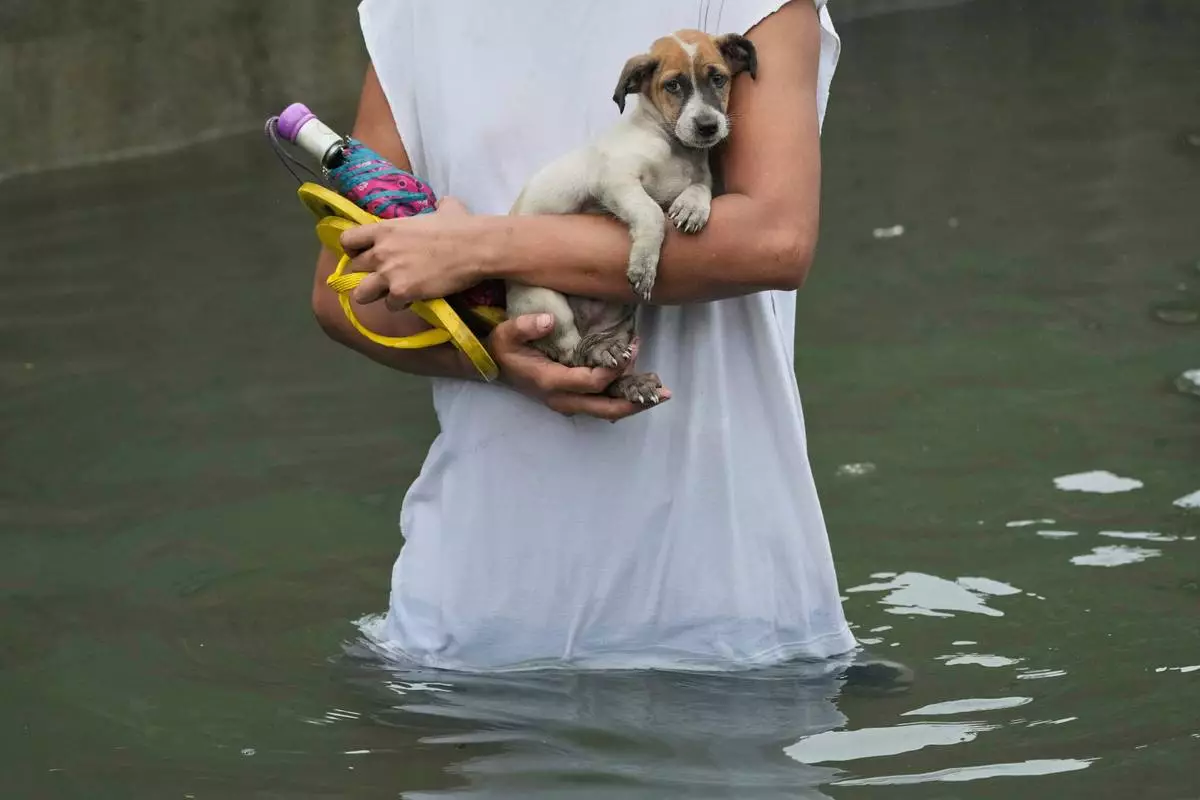
A puppy is carried by a man after being rescued from a flooded home as Typhoon Co-may intensified seasonal monsoon rains at Malabon city, Philippines on Friday, July 25, 2025. (AP Photo/Aaron Favila)

Residents wade along a flooded road as intense rains continue due to the southwest monsoon at Malabon city, Philippines on Thursday, July 24, 2025. (AP Photo/Aaron Favila)

A man pedals his bicycle along a flooded road as intense rains continue due to the southwest monsoon at Malabon city, Philippines on Thursday, July 24, 2025. (AP Photo/Aaron Favila)

A resident carries items from her flooded home as intense rains continue due to the southwest monsoon at Malabon city, Philippines on Thursday, July 24, 2025. (AP Photo/Aaron Favila)

A man walks along a flooded road as intense rains continue due to the southwest monsoon at Malabon city, Philippines on Thursday, July 24, 2025. (AP Photo/Aaron Favila)

In this photo provided by the Philippine Coast Guard, rescuers assist a man to a rubber boat as they bring him to safer grounds following floods in Mamburao, Occidental Mindoro province, Philippines on Wednesday July 23, 2025. (Philippine Coast Guard via AP)3

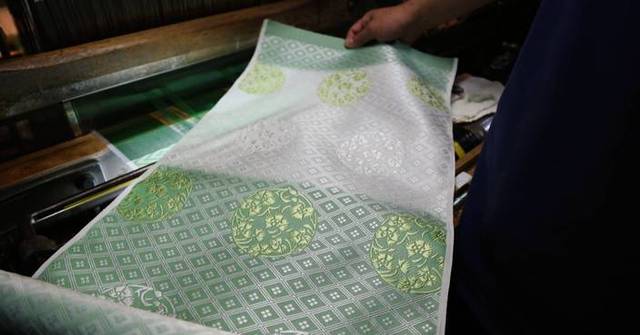
AloJapan.com